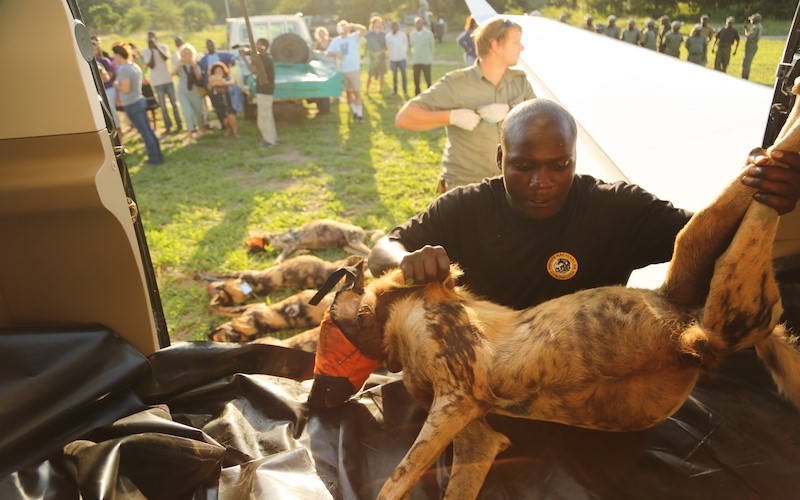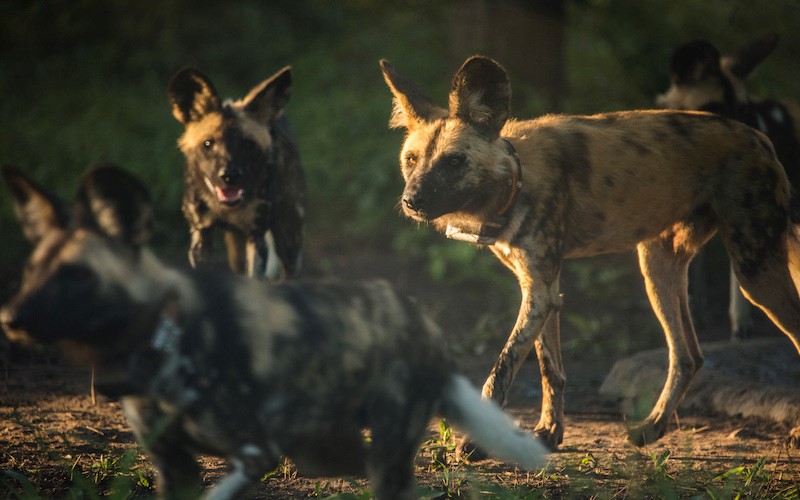By Ali Bruce
May 7 2020, 19.45
Follow @SW_Londoner
A civil war lasting more than a decade laid waste to the exuberant wildlife belonging to what was once a leading protected area of southern Africa.
Gorongosa National Park in Mozambique has been working to undo years of strife, and part of this project was the reintroduction of the highly endangered African wild dog.
Through years of conflict an ecosystem emerged and began to flourish, but balance was lacking.
The Endangered Wildlife Trust wild dog range expansion programme coordinator Cole Du Plessis, 30, said: “The Gorongosa team had spent the past ten years restoring the park, removing landmines, doing snaring patrols and, because of that, the prey numbers were building up again, but the problem was there were no predators.”
EWT is a South African organisation for the conservation of endangered species and has worked alongside Gorongosa to restore balance.
Lions that remained following the Mozambican Civil War started to bounce back, but for nearly half a century the wild dog, or the painted wolf, was not part of the landscape.
With numbers decreasing, local extinction in 29 of the 35 countries they once roamed and fewer than 1,500 mature wild dogs remaining in the wild, the project at Gorongosa might serve as an exemplar for saving the species.
Since 2018 EWT have helped to relocate two packs totalling 29 dogs to Gorongosa from South Africa.
The population is now up to 54, despite it being thought that an alpha female lost a litter of pups to an African rock python.
The dogs overcame this serpentine setback, and the pack doggedly deviated from its rigid hierarchical structure, whereby the alpha female is typically the breeder, to increase their population.
“The beta female in that first pack also had pups and was allowed to keep them, so that made up for the loss of the first litter to some degree,” said James Byrne, 49, media director for the Carr Foundation, Gregory Carr’s philanthropic project to restore Gorongosa.
“She had them separately, but they were incorporated and looked after by the adults in the main pack.”
He added: “It was a very unusual situation.”
One of 8 NEW wild dog pups in a second litter for #GorongosaPark. Two litters born 9 weeks apart – the first to the alpha female and second to the beta female is a rare occasion. #gorongosa #mozambique #gorongosacoffee #paintedwolves #wilddogs .@BBCEarth Photo: Brett Kuxhausen pic.twitter.com/tJOGssYEoI
— Gorongosa National Park (@GorongosaPark) July 20, 2019

Mr Du Plessis said: “Taking the wild dogs up there has restored the ecosystem, which is kind of special.”
In another operation to take 13 wild dogs to Karingani Game Reserve in Mozambique, there has been similar success but of a different kind.
Wild dogs sometimes break away to start new packs with other groups of the opposite sex, this is called a dispersal group.
Breakaway painted wolves can travel up to 100kms per day searching for new recruits.
Until now, dispersal groups were barking up the wrong tree at dog-less Karingani, so they would simply pass through.
However, Karingani was lapped up after the reintroduction of wild dogs. The nomadic wolves stuck to the area, no longer risking vast distances of snare-scattered terrain and human development to begin another pack.
Disease, snaring, and human-animal conflict alongside shrinking habitats has pushed wild dogs to being one of the world’s most endangered mammals.
The overall wild dog population is declining and conservation is increasingly the object of underfunding and budget cuts.
Kate Church, founder of African Wildlife Vets, a South African non-profit organisation providing veterinary support for conservation, said: “Because budgets are being cut every year they need financial support and rely hugely on non-profits and the private sector to keep them going.”
Yet South Africa has succeeded in bringing stability or even growth to its number of painted wolves, the only African country to do so.
Because of this, places like Gorongosa and Karingani are able to source wild dogs from South Africa to reinstate their own wild dog populations.
The projects at Gorongosa and Karingani show that transnational cooperation can succeed in boosting the population, but this demands an acceptance that intervention is required.

The situation that wild dogs find themselves in is largely at the hands of human development, diminished habitat and persecution from farmers and communities.
But human intervention can also be the lifeline this species needs.
“Humans have intruded so much that we can’t go back. In order to protect the species we have to do things to continue to protect them,” vowed Miss Church.
All images courtesy of Brett Kuxhausen, with thanks
